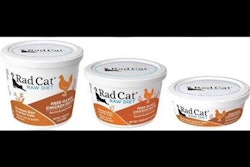
Considering pets are family members with often the same level of importance and influence that human members have (sometimes more!), it stands to reason that as our societies and cultures continue to change, pets and their roles will keep evolving, too. Those changes offer insights and opportunities for pet food brands, according to Joeri Van den Bergh, co-founder and managing partner of InSites Consulting.
Not surprisingly, many of the impending transformations are related to the up-and-coming generations of pet owners, typically referred to as Generation Y and Generation Z: their diminishing trust in professions, corporations, brands and institutions; propensity to delay or forgo marriage and similar long-term relationships (with people); focus on personalization and customization; reliance on technology and social media; and demand for authenticity and credibility.
Among his many titles, Van den Bergh is listed as a “NextGen” expert at InSites and author of a book, “How Cool Brands Stay Hot: Branding to Gen Y and Z.” He presented at Royal Canin’s Future of Animal Companionship Conference on October 24 in Paris.
How to combat ‘Dr. Google’ and branding backlash
Discussing consumers’ declining trust in society, Van den Bergh said that in this era of “fake news,” seven of 10 people globally no longer trust journalists and media, according to the annual Edelman Trust Barometer. But more importantly, he raised this question: “If people don’t trust journalists, who do they trust? Is it still vets and doctors, or is it ‘Dr. Google’?” I would argue it’s often the latter option, making it imperative for pet food brands to better communicate science-based pet nutrition information.
Later in his presentation, Van den Bergh talked about younger generations’ tendency to follow influencers on social media: “YouTube is the new TV, YouTube stars are their new stars.” He tied this to Gen Z’s thirst for authenticity and reality, which in my mind also ties to the lack of trust in many societal factions, including companies and brands.
In some ways, it’s also a backlash to the move by many products and brands (including some in pet food) toward features and label claims like “craft,” “artisanal” and “small batch.” Any concept can be taken too far or overdone in the marketplace, Van den Bergh alluded, making his point by playing a parody ad for Northern Quilted “Rustic Weave” toilet paper handcrafted from tree bark. (It was quite entertaining.)
The good news is that there are ways for brands to address these consumer demands, through tactics like interactivity, storytelling and sticking to your roots — keeping things simple. Van den Bergh referred to all these as becoming more “touchable” and offered several examples, including ones from pet food: Ollie Dog Food, which tells the story behind its existence (as so many pet food companies and brands do), and Open Farm pet food, which has made tracking and tracing the ingredients in its products a core part of its branding and marketing from its beginning.
His non-pet food examples also offered (ahem) food for thought, coming from the human beverage world: Starbucks encouraging its staff to create their own coffee drinks, which have then been offered for sale at the respective local stores, and McDonald’s in the UK focusing on its regular, affordable coffee with an ad spoofing fancy, high-priced coffee drinks and shops. (Ironic that Van den Bergh used those two examples within a few minutes of each other!)
Combine giving back with a focus on the consumer
Van den Bergh also recommended that brands adopt an agile mindset, combining macro with micro consumer needs. The macro side involves consumer demand, especially from millennials and Gen Z, for companies and brands to give back to society and their communities — for example, Toms Shoes and its “one for one” strategy of donating a pair of shoes to a person in need for every pair purchased. Van den Bergh described this as younger consumers’ need for “guilt-free consumption.” (I think it applies to older consumers, too.)
On the micro side, though, it’s all about the consumer: me me me. Younger consumers increasingly want personalized and customized products, and that is starting to extend to their pets’ food. Likewise, they flock to DIY (do it yourself) products. “We think we can do it better, cheaper or faster, ourselves,” Van den Bergh said. In pet food, that plays out with products that allow pet owners to mix in water or meat to prepare the meal for their pets, or add a mixer or topper to the pet’s regular food to add a personal touch of variety.
Moving toward a singles society
In the end, it may all come down to demographics. By 2020, essentially only a year away, there will be more than 300 million single-person households worldwide, according to Euromonitor. That represents an 80 percent increase in those households in the past 15 years, Van den Bergh said. As of now, the global average of single households is 40 percent, rising to as high as 60 percent in some cities.
No doubt that includes in China, which celebrates Singles Day every November 11 (“11 11,” as Van den Bergh pointed out). Starting in 2011, or 11 11 11, Alibaba, the huge e-commerce platform in China, initiated a huge shopping event on that day with large discounts on all types of products. “In 2017, Alibaba raked in US$25 billion on that one day, double Black Friday and Cyber Monday combined,” Van den Bergh said. His presentation was on October 24, 2018; on November 11 this year, Alibaba beat its own record, reaching US$30.8 billion in 24 hours.
China aside (though pet ownership is definitely, steadily rising there), many single people around the world are turning to pets or strengthening bonds with their existing pets, which offers many opportunities for pet food brands. The growing tendency toward single households also affects how people buy food and other products. For example, 24 percent of Gen Zers in the U.S. use UberEats, Van den Bergh said, compared with only 6 percent of baby boomers.
Yet those older consumers may be ripe for messages from pet food brands, too. Van den Bergh highlighted a Pedigree campaign in New Zealand that encouraged empty-nesters to consider replacing their departing children with pets. The campaign included an online tool allowing people to match a prospective pet to their child’s characteristics, then connect them to an animal shelter nearby.
The point is, there are plenty of creative ways for pet food brands to reach consumers where they are today and where they’re (rapidly) moving to. The trick is staying ahead of and planning for those moves.

















